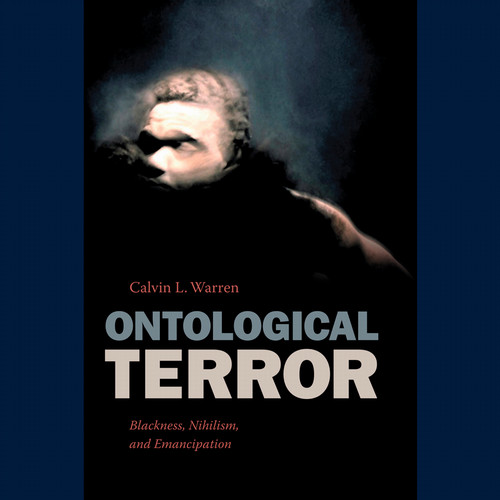faculty publications
The Second
In The Second, historian and award-winning, bestselling author of White Rage Carol Anderson powerfully illuminates the history and impact of the Second Amendment, how it was designed, and how it has consistently been constructed to keep African Americans powerless and vulnerable. The Second is neither a “pro-gun” nor an “anti-gun” book; the lens is the citizenship rights and human rights of African Americans.
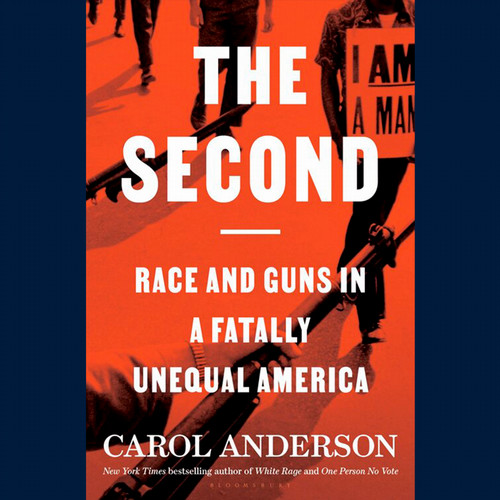
One Person No Vote
In her New York Times bestseller White Rage, Carol Anderson laid bare an insidious history of policies that have systematically impeded black progress in America, from 1865 to our combustible present. With One Person, No Vote, she chronicles a related history: the rollbacks to African American participation in the vote since the 2013 Supreme Court decision that eviscerated the Voting Rights Act of 1965. Known as the Shelby ruling, this decision effectively allowed districts with a demonstrated history of racial discrimination to change voting requirements without approval from the Department of Justice.
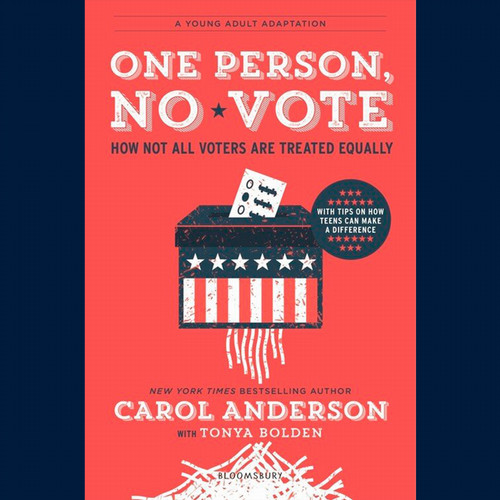
White Rage
As Ferguson, Missouri, erupted in August 2014, and media commentators across the ideological spectrum referred to the angry response of African Americans as "black rage," historian Carol Anderson wrote a remarkable op-ed in the Washington Post showing that this was, instead, "white rage at work. With so much attention on the flames," she writes, "everyone had ignored the kindling."
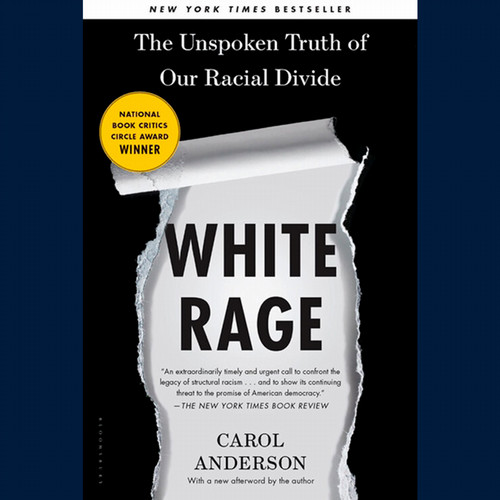
We Are Not Yet Equal
Carol Anderson's White Rage took the world by storm, landing on the New York Timesbestseller list and best book of the year lists from New York Times, Washington Post, Boston Globe, and Chicago Review of Books. It launched her as an in-demand commentator on contemporary race issues for national print and television media and garnered her an invitation to speak to the Democratic Congressional Caucus. This compelling young adult adaptation brings her ideas to a new audience.
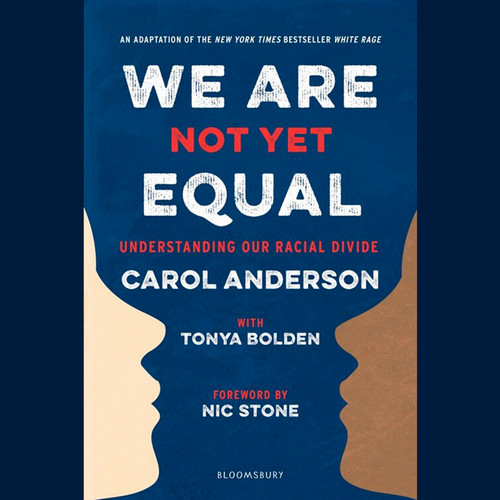
Eyes Off the Prize

Bourgeois Radicals
Bourgeois Radicals explores the NAACP's key role in the liberation of Africans and Asians across the globe even as it fought Jim Crow on the home front during the long civil rights movement. In the eyes of the NAACP's leaders, the way to create a stable international system, stave off communism in Africa and Asia, and prevent capitalist exploitation was to embed human rights, with its economic and cultural protections, in the transformation of colonies into nations. Indeed, the NAACP aided in the liberation struggles of multiple African and Asian countries within the limited ideological space of the Second Red Scare. However, its vision of a “third way” to democracy and nationhood for the hundreds of millions in Asia and Africa was only partially realized due to a toxic combination of the Cold War, Jim Crow, and die-hard imperialism. Bourgeois Radicals examines the toll that internationalism took on the organization and illuminates the linkages between the struggle for human rights and the fight for colonial independence.
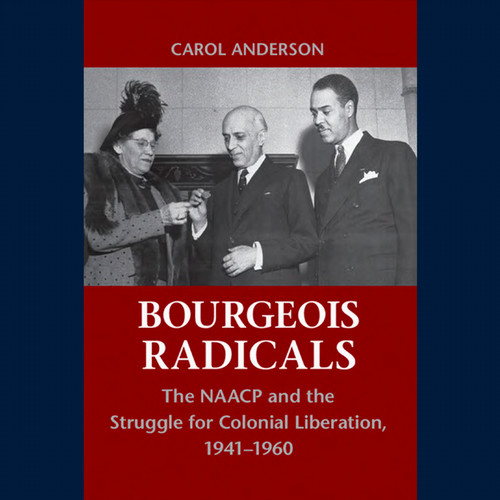
The Book of James
LeBron James is the hero in two very American tales: one, a success story the nation loves; the other, the latest installment in an ongoing chronicle of American antiblackness. He’s the poor boy from a “broken” home who makes good. He’s also the poor Black boy from a “broken” home who makes good, then at the apex of his career finds “n*****” spray-painted across the gate to his home.
James has lived in the public eye ever since high school when his extraordinary athletic skills subjected his every action, every statement, every fashion choice to intense public scrutiny that tells us less about James himself and more about a nation still wrestling with many social inequities. He uses his celebrity not to transcend Blackness, but to give it a place of cultural prominence, and the backlash he receives exposes the frictions between Blackness and a country not fully comfortable with its presence. As a result, James’s story is a revelatory narrative of how much Blackness is loved, hated, misunderstood, and just plain cool in an America that has changed and yet not changed at all.

A History of the African American Novel
A History of the African American Novel offers an in-depth overview of the development of the novel and its major genres. In the first part of this book, Valerie Babb examines the evolution of the novel from the 1850s to the present, showing how the concept of black identity has transformed along with the art form. The second part of this History explores the prominent genres of African American novels, such as neoslave narratives, detective fiction, and speculative fiction, and considers how each one reflects changing understandings of blackness. This book builds on other literary histories by including early black print culture, African American graphic novels, pulp fiction, and the history of adaptation of black novels to film. By placing novels in conversation with other documents - early black newspapers and magazines, film, and authorial correspondence - A History of the African American Novel brings many voices to the table to broaden interpretations of the novel's development.
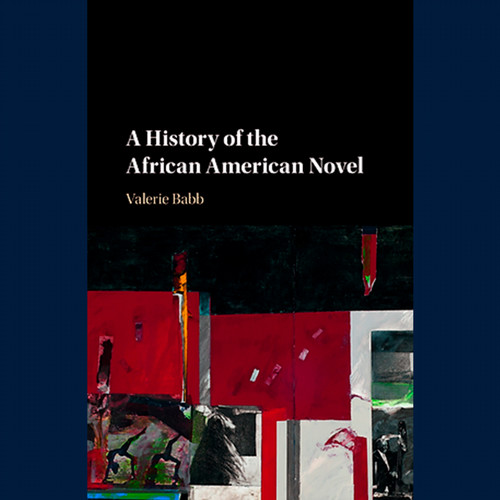
Whiteness Visible
In Whiteness Visible, Valerie Babb investigates the history, values, rituals, and shared consciousness that created whiteness in the United States, as well as the representations that sustain its influence on both cultural and literary vision. Babb formulates an understanding of whiteness by tracing its literary and cultural evolution, enlisting diverse sources from, among others, the Han dynasty, Aristotle's Politica, and excerpts from the recollections of white indentured servants.
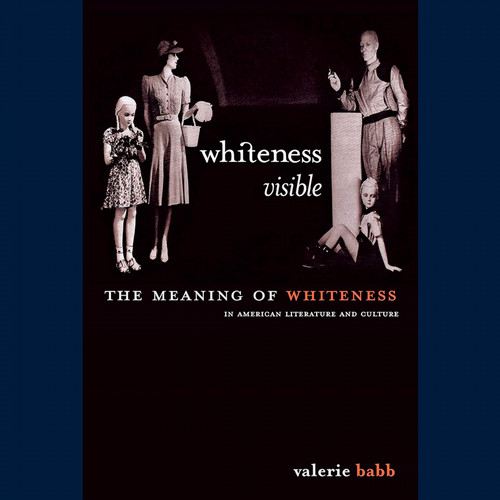
Black Georgetown Remembered
Black Georgetown Remembered is a compelling journey through more than two hundred years of history. This one-of-a-kind book invites readers to consider how the unique heritage of this neighborhood intersects and contributes to broader themes in African American and Washington, DC, history and urban studies.
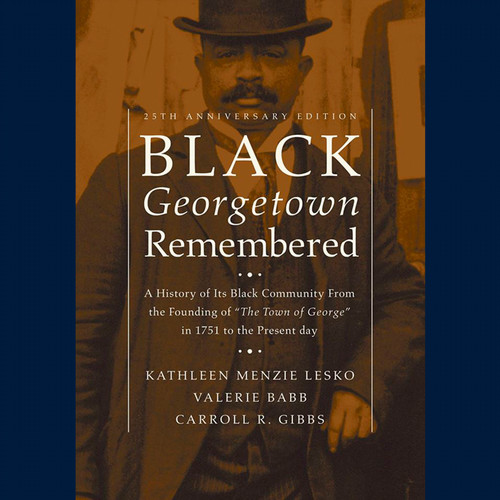
Ernest Gaines
From Ernest Gaines:
"The larger society he depicts in his fiction is not only one in which white dominates black; it is also one in which literacy dominates orality. By focusing his fiction on the smaller community within this society, the quarters, Gaines effects a reorganization of the written-oral hierarchy and defines a possible 'black aesthetic' using the 'liars' of his community, the hoodoo of Louisiana, the history of slavery, and the quest for human dignity."

The Radical Imagination of Black Women
Including interviews with Black women holding political office at the national, state, and local levels, as well as focus group data, The Radical Imagination of Black Women challenges political science's current approach to political ambition by exploring how Black women decide to seek political office. Pearl K. Ford Dowe argues that ambition for Black women cannot be measured only by political candidacies and ascents of the political chain of power. Black women are uniquely positioned within their communities to influence politics and public policy, which stems from unique variables of socialization, gender and racial identity, and marginalization that shape the political attitudes of Black women. Thus, Dowe asserts that Black women's political ambition often manifests outside formal politics, in activism and community building, a process that is linked to a wider radical vision for a full democracy. This is ambition that occurs in a specific context of marginalization, and both motivation and the conditions surrounding such motivation are critical to understanding the full range of Black women's political work. By focusing on Black women's experiences in elite politics, The Radical Imagination of Black Women is a much-needed intervention in the literature on electoral ambition, women in politics, and candidates and elections.
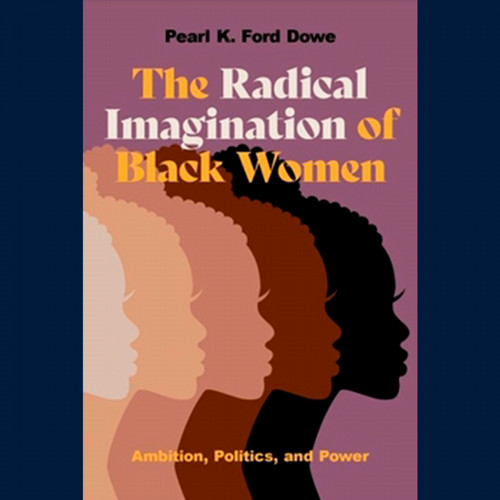
Remaking the Democratic Party
A continuation of Hanes Walton Jr.’s work on Southern Democratic presidents, Remaking the Democratic Party analyzes the congressional and presidential elections of Lyndon Baines Johnson. This study builds upon the general theory of the native-son phenomenon to demonstrate that a Southern native-son can win the presidency without the localism evident in the elections of Bill Clinton and Jimmy Carter.
Although ridiculed by contemporaries for his apparent lack of control over formal party politics and the national committee, Johnson excelled at leading the Democratic Party’s policy agenda. While a senator and as president, Johnson advocated for—and secured—liberal social welfare and civil rights legislation, forcing the party to break with its Southern tradition of elitism, conservatism, and white supremacy. In a way, Johnson set the terms for the continuing partisan battle because, by countering the Democrats’ new ideology, the Republican Party also underwent a transformation.
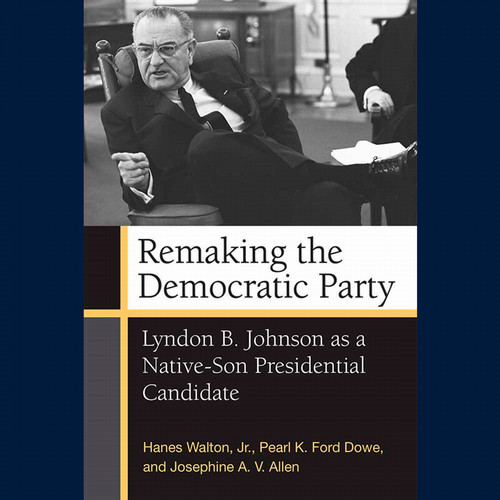
She Came To Slay
Harriet Tubman is best known as one of the most famous conductors on the Underground Railroad. As a leading abolitionist, her bravery and selflessness has inspired generations in the continuing struggle for civil rights. Now, National Book Award nominee Erica Armstrong Dunbar presents a fresh take on this American icon blending traditional biography, illustrations, photos, and engaging sidebars that illuminate the life of Tubman as never before.

Never Caught
A startling and eye-opening look into America’s First Family, Never Caught is the powerful narrative of Ona Judge, George and Martha Washington’s runaway slave who risked it all to escape the nation’s capital and reach freedom.
When George Washington was elected president, he reluctantly left behind his beloved Mount Vernon to serve in New York and then Philadelphia, the temporary seat of the nation’s capital. In setting up his household he took Tobias Lear, his celebrated secretary, and nine slaves, including Ona Judge, about which little has been written. As he grew accustomed to Northern ways, there was one change he couldn’t get his arms around: Pennsylvania law required enslaved people be set free after six months of residency in the state. Rather than comply, Washington decided to circumvent the law. Every six months he sent the slaves back down south or out of the state, just as the clock was about to expire.
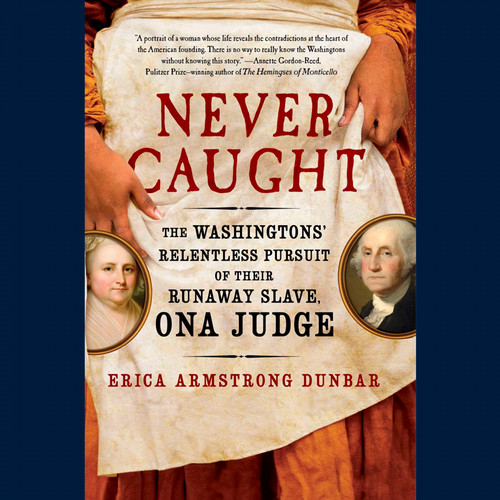
Never Caught (Young Readers)
A National Book Award Finalist for Nonfiction, Never Caught is the eye-opening narrative of Ona Judge, George and Martha Washington’s runaway slave, who risked everything for a better life—now available as a young reader’s edition!
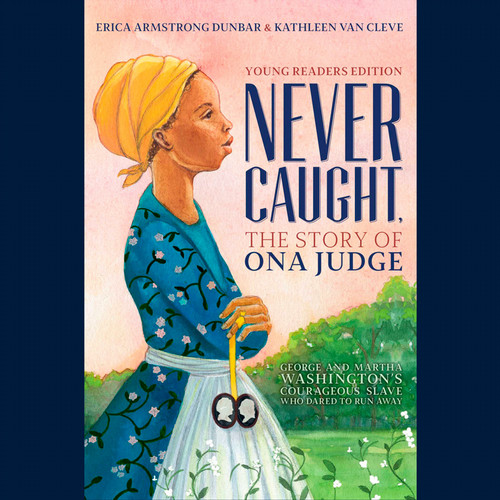
A Fragile Freedom
This book is the first to chronicle the lives of African American women in the urban north during the early years of the republic. A Fragile Freedom investigates how African American women in Philadelphia journeyed from enslavement to the precarious status of “free persons” in the decades leading up to the Civil War and examines comparable developments in the cities of New York and Boston.
Erica Armstrong Dunbar argues that early nineteenth-century Philadelphia, where most African Americans were free, enacted a kind of rehearsal for the national emancipation that followed in the post–Civil War years. She explores the lives of the “regular” women of antebellum Philadelphia, the free black institutions that took root there, and the previously unrecognized importance of African American women to the history of American cities.

Racism: Science & Tools for the Public Health Professional, 2nd edition

Racism: Science & Tools for the Public Health Professional

Vengeance Feminism
So often failed by the state, demeaned by racism and sexism, and denied respectable means of redress, Black women have nevertheless patiently resisted myriad injustices. Yet history shows an alternative path. It involved razors, pistols, hatchets, and blackjacks, and playacting for courts and reporters--whatever it took to beat the system. In a world where Black women are castigated and caricatured for being angry, Vengeance Feminism tells the story of those who leaned into their fury, crafting a different kind of ideology that scratched and stabbed and sometimes even succeeded.
Vengeance Feminism is about the Black women who hit back--not always figuratively, and not necessarily nobly either. Weaving together historical narrative with Black feminist analysis, Gross illuminates the stories of Black women who fought for their dignity on their own terms, from the nineteenth-century "badger thieves" who robbed men on the streets of Philadelphia to victims of intimate partner violence who defended their honor and bodily autonomy with deadly force.
Reckoning with women who lied, robbed, and cheated a racist, misogynistic world, Vengeance Feminism grapples with the volatile power of violence in pursuit of racial and gender justice.
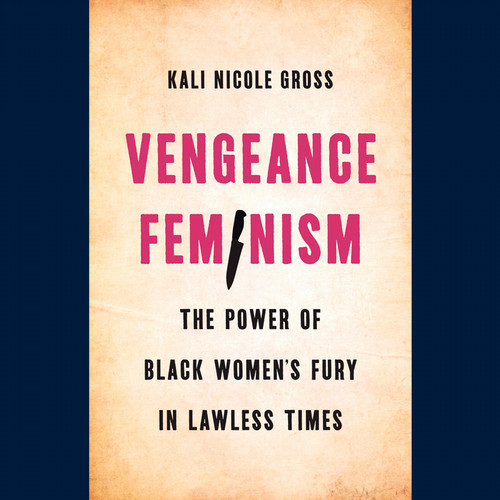
A Black Women's History of the United States
Spanning over 400 years, this book prioritizes all voices: from poor and working-class domestics to middle-class reform women to sex workers and female convicts. The book challenges historical stereotypes and myths but also offers a contemporary understanding of Black women in America, highlighting diverse lives--from activists to athletes to rappers. Focusing on the unique and expansive experience of Black women, Berry and Gross reach far beyond a single narrative of Black women in America. The result is a book that centers race, gender and sexuality in the North, as well as the South, and in both rural and urban areas, to show that Black women are--and have always been--foundational to America.
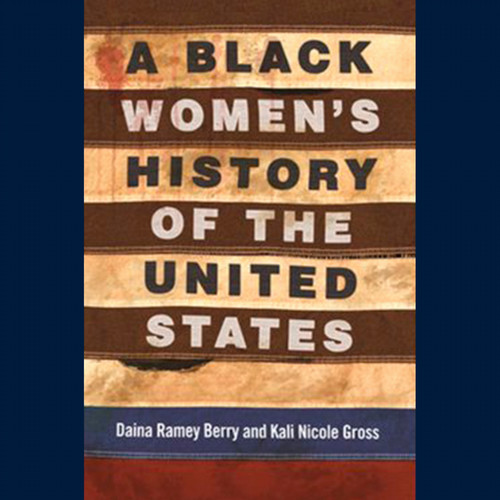
Hannah Mary Tabbs
Shortly after a dismembered torso was discovered by a pond outside Philadelphia in 1887, investigators homed in on two suspects: Hannah Mary Tabbs, a married, working-class, black woman, and George Wilson, a former neighbor whom Tabbs implicated after her arrest.
As details surrounding the shocking case emerged, both the crime and ensuing trial--which spanned several months--were featured in the national press. The trial brought otherwise taboo subjects such as illicit sex, adultery, and domestic violence in the black community to public attention. At the same time, the mixed race of the victim and one of his assailants exacerbated anxieties over the purity of whiteness in the post-Reconstruction era.
In Hannah Mary Tabbs and the Disembodied Torso, historian Kali Nicole Gross uses detectives' notes, trial and prison records, local newspapers, and other archival documents to reconstruct this ghastly whodunit crime in all its scandalous detail. In doing so, she gives the crime context by analyzing it against broader evidence of police treatment of black suspects and violence within the black community.
A fascinating work of historical recreation, Hannah Mary Tabbs and the Disembodied Torso is sure to captivate anyone interested in true crime, adulterous love triangles gone wrong, and the racially volatile world of post-Reconstruction Philadelphia.
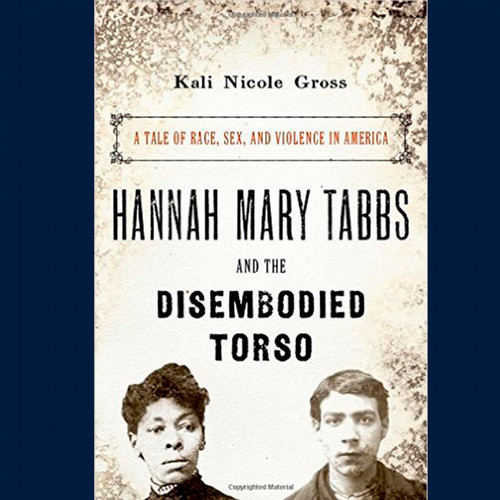
Colored Amazons
Colored Amazons is a groundbreaking historical analysis of the crimes, prosecution, and incarceration of black women in Philadelphia at the turn of the twentieth century. Kali N. Gross reconstructs black women’s crimes and their representations in popular press accounts and within the discourses of urban and penal reform. Most importantly, she considers what these crimes signified about the experiences, ambitions, and frustrations of the marginalized women who committed them. Gross argues that the perpetrators and the state jointly constructed black female crime. For some women, crime functioned as a means to attain personal and social autonomy. For the state, black female crime and its representations effectively galvanized and justified a host of urban reform initiatives that reaffirmed white, middle-class authority.

Feelin
Feelin: Creative Practice, Pleasure, and Black Feminist Thought makes a bold and vital intervention in critical theory’s trend toward disembodying feeling as knowledge. Instead, Judd revitalizes current debates in Black studies about the concept of the human and about Black life by considering how discourses on emotion as they are explored by Black women artists offer alternatives to the concept of the human. Judd expands the notions of Black women’s pleasure politics in Black feminist studies that include the erotic, the sexual, the painful, the joyful, the shameful, and the sensations and emotions that yet have no name. In its richly multidisciplinary approach, Feelin calls for the development of research methods that acknowledge creative and emotionally rigorous work as productive by incorporating visual art, narrative, and poetry.
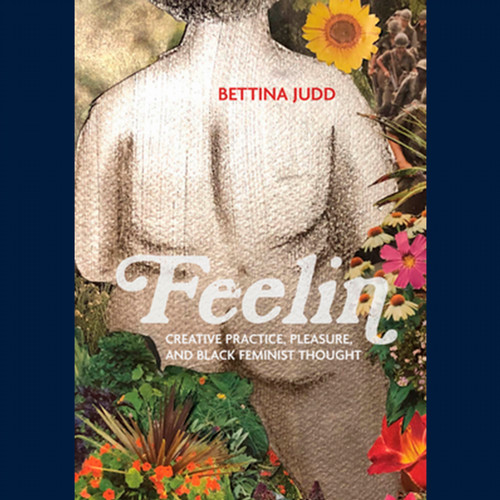
Gold Coast
Although they came from distinct polities and peoples who spoke different languages, slaves from the African Gold Coast were collectively identified by Europeans as “Coromantee” or “Mina.” Why these ethnic labels were embraced and how they were utilized by enslaved Africans to develop new group identities is the subject of Walter C. Rucker’s absorbing study. Rucker examines the social and political factors that contributed to the creation of New World ethnic identities and assesses the ways displaced Gold Coast Africans used familiar ideas about power as a means of understanding, defining, and resisting oppression. He explains how performing Coromantee and Mina identity involved a common set of concerns and the creation of the ideological weapons necessary to resist the slaveocracy. These weapons included obeah powders, charms, and potions; the evolution of “peasant” consciousness and the ennoblement of common people; increasingly aggressive displays of masculinity; and the empowerment of women as leaders, spiritualists, and warriors, all of which marked sharp breaks or reformulations of patterns in their Gold Coast past.

The River Flows On
The River Flows On offers an impressively broad examination of slave resistance in America, spanning the colonial and antebellum eras in both the North and South and covering all forms of recalcitrance, from major revolts and rebellions to everyday acts of disobedience. Walter C. Rucker analyzes American slave resistance with a keen understanding of its African influences, tracing the emergence of an African American identity and culture. Rucker points to the shared cultural heritage that facilitated collective action among both African- and American-born slaves, such as the ubiquitous belief in conjure and spiritual forces, the importance of martial dance and the drum, and ideas about the afterlife and transmigration.
Focusing on the role of African cultural and sociopolitical forces, Rucker gives in-depth attention to the 1712 New York City revolt, the 1739 Stono rebellion in South Carolina, the 1741 New York conspiracy, Gabriel Prosser's 1800 Richmond slave plot, and Denmark Vesey's 1822 Charleston scheme. He concludes with Nat Turner's 1831 revolt in Southampton, Virginia, which bore the marks of both conjure and Christianity, reflecting a new, African American consciousness. With rich evidence drawn from anthropology, archaeology, and religion, The River Flows On is an innovative and convincing study.

A Chance for Change
In this innovative study, Crystal Sanders explores how working-class black women, in collaboration with the federal government, created the Child Development Group of Mississippi (CDGM) in 1965, a Head Start program that not only gave poor black children access to early childhood education but also provided black women with greater opportunities for political activism during a crucial time in the unfolding of the civil rights movement. Women who had previously worked as domestics and sharecroppers secured jobs through CDGM as teachers and support staff and earned higher wages. The availability of jobs independent of the local white power structure afforded these women the freedom to vote in elections and petition officials without fear of reprisal. But CDGM's success antagonized segregationists at both the local and state levels who eventually defunded it.
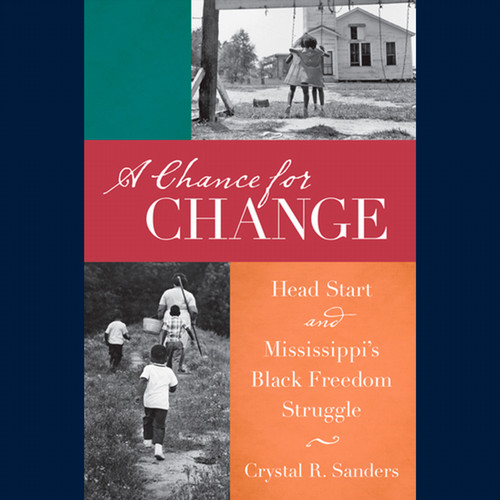
A Forgotten Migration
A Forgotten Migration tells the little-known story of "segregation scholarships" awarded by states in the US South to Black students seeking graduate education in the pre–Brown v. Board of Education era. Under the Plessy v. Ferguson decision, decades earlier, southern states could provide graduate opportunities for African Americans by creating separate but equal graduate programs at tax-supported Black colleges or by admitting Black students to historically white institutions. Most did neither and instead paid to send Black students out of state for graduate education.

Three Eyes for the Journey
Studies of African-derived religious traditions have generally focused on their retention of African elements. This emphasis, says Dianne Stewart, slights the ways in which communities in the African diaspora have created and formed religious meaning. In this fieldwork-based study Stewart shows that African people have been agents of their own religious, ritual, and theological formation.
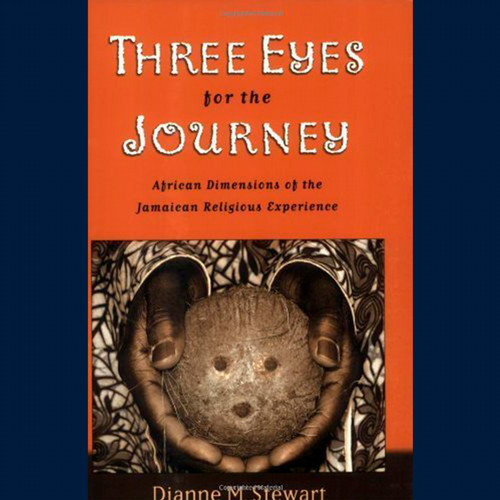
Black Women, Black Love
When the search for love is a struggle, or a relationship ends, the “failure” can feel entirely personal. But as Dianne Stewart shows in Black Women, Black Love: America's War on African American Marriage, Black women seeking satisfying long-term relationships with Black men are working against the headwinds of 400 years of history, racist policies, and deep-seated prejudice. Drawing on research in American history, economics, social science and theology, Stewart exposes this tragedy of “forbidden Black love” as our nation’s most neglected civil rights issue.
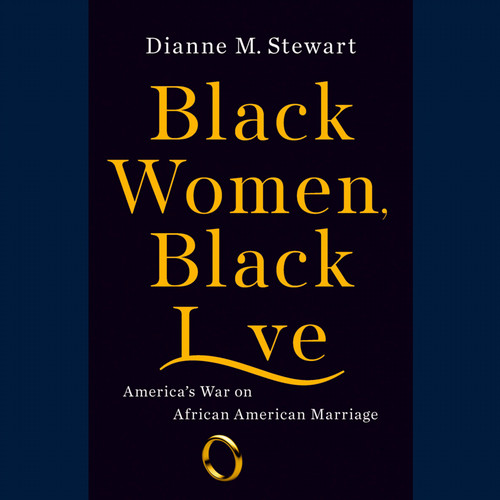
Obeah, Orisa & Religious Identity in Trinidad
Obeah, Orisa, and Religious Identity in Trinidad is an expansive two-volume examination of social imaginaries concerning Obeah and Yoruba-Orisa from colonialism to the present. Analyzing their entangled histories and systems of devotion, Tracey E. Hucks and Dianne M. Stewart articulate how these religions were criminalized during slavery and colonialism yet still demonstrated autonomous modes of expression and self-defense. In Volume II, Orisa, Stewart scrutinizes the West African heritage and religious imagination of Yoruba-Orisa devotees in Trinidad from the mid-nineteenth century to the present and explores their meaning-making traditions in the wake of slavery and colonialism. She investigates the pivotal periods of nineteenth-century liberated African resettlement, the twentieth-century Black Power movement, and subsequent campaigns for the civil right to religious freedom in Trinidad. Disrupting syncretism frameworks, Stewart probes the salience of Africa as a religious symbol and the prominence of Africana nations and religious nationalisms in projects of black belonging and identity formation, including those of Orisa mothers. Contributing to global womanist thought and activism, Yoruba-Orisa spiritual mothers disclose the fullness of the black religious imagination’s affective, hermeneutic, and political capacities.
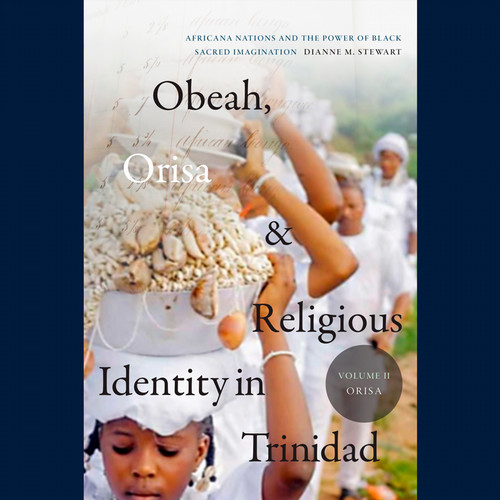
Skin Deep Spirit Strong
The essays in Skin Deep, Spirit Strong: The Black Female Body in American Culture chart the ways that the simultaneous interrogation of gender, race, and corporeality shape the construction of black female representation. Kimberly Wallace-Sanders has enlisted a wide variety of scholarly perspectives and critical approaches about the place of black women's bodies within the American cultural consciousness. An impressive gathering of essays and visual art by feminist scholars and artists, the book presents a persuasive argument for broadening the ongoing scholarly conversations about the body. It makes clear that the most salient discourses in poststructuralist and feminist theory are made richer and more complex when the black female body is considered.
The collection blends original and classic essays to reveal the interconnections among art, literature, public policy, the history of medicine, and theories about sexuality with regard to bodies that are both black and female. Contributors include Rachel Adams, Elizabeth Alexander, Lisa Collins, Bridgette Davis, Lisa E.Farrington, Anne Fausto-Sterling, Beverly Guy-Sheftall, Evelynn Hammonds, Terri Kapsalis, Jennifer L. Morgan, Siobhan B. Somerville, Kimberly Wallace-Sanders, Carla Williams, and Doris Witt.
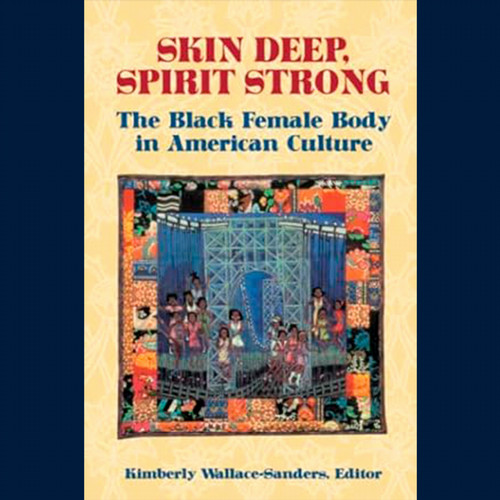
Mammy
This groundbreaking book traces the mammy figure and what it has symbolized at various historical moments that are linked to phases in America's racial consciousness. The author shows how representations of Mammy have loomed over the American literary and cultural imagination, an influence so pervasive that only a comprehensive and integrated approach of this kind can do it justice.
The book's many illustrations trace representations of the mammy figure from the nineteenth century to the present, as she has been depicted in advertising, book illustrations, kitchen figurines, and dolls. The author also surveys the rich and previously unmined history of the responses of African American artists to the black mammy stereotype, including contemporary reframings by artists Betye Saar, Michael Ray Charles, and Joyce Scott.

Ontological Terror
In Ontological Terror Calvin L. Warren intervenes in Afro-pessimism, Heideggerian metaphysics, and black humanist philosophy by positing that the "Negro question" is intimately imbricated with questions of Being. Warren uses the figure of the antebellum free black as a philosophical paradigm for thinking through the tensions between blackness and Being. He illustrates how blacks embody a metaphysical nothing. This nothingness serves as a destabilizing presence and force as well as that which whiteness defines itself against. Thus, the function of blackness as giving form to nothing presents a terrifying problem for whites: they need blacks to affirm their existence, even as they despise the nothingness they represent. By pointing out how all humanism is based on investing blackness with nonbeing—a logic which reproduces antiblack violence and precludes any realization of equality, justice, and recognition for blacks—Warren urges the removal of the human from its metaphysical pedestal and the exploration of ways of existing that are not predicated on a grounding in being.
